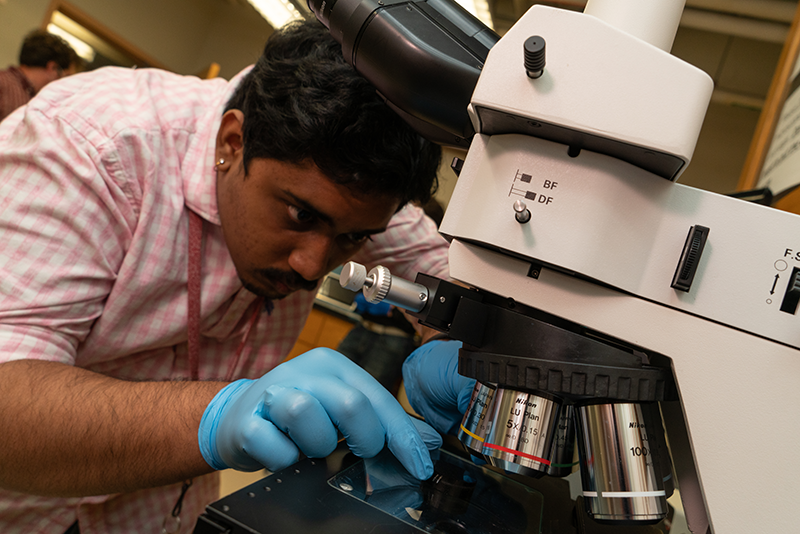Located on the first floor of Carnegie Mellon University’s Roberts Hall of Engineering, The Materials Characterization Facility (MCF) supports the cutting-edge research of nearly 100 groups at Carnegie Mellon University and across the region, enabling enhanced data analysis for researchers in 30 countries.
 Within its facilities, the MCF houses 18 state-of-the art characterization tools maintained by highly qualified technical staff members. At the center of the Materials Characterization Facility is the Digital Microscopy Classroom. Unlike many other characterization facilities, the classroom enables students to remotely operate microscopy tools. It is also used extensively for both undergraduate and graduate courses, as well as special seminars and instrument manufacturer tutorials.
Within its facilities, the MCF houses 18 state-of-the art characterization tools maintained by highly qualified technical staff members. At the center of the Materials Characterization Facility is the Digital Microscopy Classroom. Unlike many other characterization facilities, the classroom enables students to remotely operate microscopy tools. It is also used extensively for both undergraduate and graduate courses, as well as special seminars and instrument manufacturer tutorials.
Researchers at CMU and across the region can be trained by our staff to operate instruments independently.
Around the world, researchers utilize EMsoft, an open-source software package created at MCF, for the simulation of electron microscopy imaging and diffraction modalities. It consists of a library with core routines for crystallography, symmetry, dynamical scattering, Monte Carlo simulations, and so on, plus a series of programs for different imaging and diffraction modalities.
The mission of MCF
- To be a highly accessible, state-of-the-art shared user facility that can address all fundamental and applied questions concerning biological, organic and inorganic materials characterization;
- To provide expertise and data analytics that supports the generation and dissemination of new knowledge;
- To innovate new characterization methods, through fundamental and pioneering research in experimental and computational materials characterization;
- To play a leading and coordinating role in the university’s shared user facility ecosystem.
- To provide a recognized world-class educational environment using the latest technologies and teaching methods for instructing materials characterization;
- And to actively engage the research community through on-site training programs, workshops, conferences, and online training.

 Within its facilities, the MCF houses 18 state-of-the art characterization tools maintained by highly qualified technical staff members. At the center of the Materials Characterization Facility is the Digital Microscopy Classroom. Unlike many other characterization facilities, the classroom enables students to remotely operate microscopy tools. It is also used extensively for both undergraduate and graduate courses, as well as special seminars and instrument manufacturer tutorials.
Within its facilities, the MCF houses 18 state-of-the art characterization tools maintained by highly qualified technical staff members. At the center of the Materials Characterization Facility is the Digital Microscopy Classroom. Unlike many other characterization facilities, the classroom enables students to remotely operate microscopy tools. It is also used extensively for both undergraduate and graduate courses, as well as special seminars and instrument manufacturer tutorials.